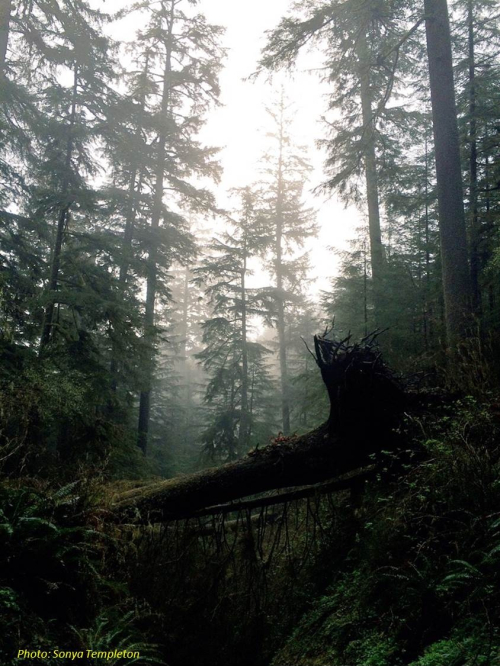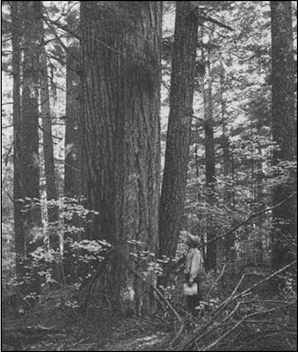The aim of the Pacific Northwest Permanent Sample Plot Program (PNW-PSP) is to study and quantify the long-term dynamics of forest vegetation. We manage more than 150 plot installations across a diversity of forest types in Oregon and Washington. These include coastal forests of spruce and hemlock, Douglas-fir-dominated forests of the western Cascades, higher-elevation forests of mountain hemlock and silver fir, as well as ponderosa pine forests in Central Oregon (view map of study sites). Plots are situated in six national forests, four experimental forests (HJ Andrews, Wind River, Cascade Head, Pringle Falls), fourteen research natural areas (RNA’s) , two national parks (Mt. Rainier, Olympic) and one national monument (Mount St. Helens).
The PNW-PSP Program is historically significant, with data records spanning decades to more than 100 years (figure below). Long-term observational data such as these are essential to understanding the fundamental processes of tree growth, mortality, regeneration and plant succession. Indeed, PNW-PSP data have enhanced our understanding of a broad range of topics relevant to forest management and ecology, including: old-growth forest structure, timber production, carbon sequestration, wildlife habitat, biodiversity, response to disturbance, and validation of remotely sensed data. Find out more about these contributions to science and forest management on our publications page.
PNW-PSP is coordinated through Oregon State University's College of Forestry, in partnership with scientists from other universities and agencies.


The PNW-PSP Program came into being in the early 1970s through the visionary leadership of Dr. Jerry Franklin. However, the program has its roots in the earliest forestry research done in the region. Starting in 1910, Thornton Munger, the first head of the Forest Service research station in Portland, OR, oversaw the installation of permanent plots to develop yield tables of key timber species. Many of these plots are still being measured today as part of PNW-PSP, as are others established in the 1920s, 30s and 40s. A second wave of permanent plots was established starting in the 1970s, as part of the Coniferous Forest Biome program at the HJ Andrews Experimental Forest. Today, all of these plots fall under the umbrella of the PNW-PSP Program.



The work done by early forest scientists is carried on today. Above are historical photos of two Douglas-fir growth and yield plots, one in the Willamette National Forest (A), the other in the Gifford Pinchot National Forest (B). Dr. Jerry Franklin (C) brought the PNW-PSP Program into prominence in the 1970s.
Funding for the PNW-PSP Program comes primarily from two sources: the National Science Foundation’s Long-Term Ecological Research Program (grant DEB 1440409) and the USDA Forest Service Pacific Northwest Research Station. We also receive significant in-kind support from our partners and collaborators, as well as volunteers.
